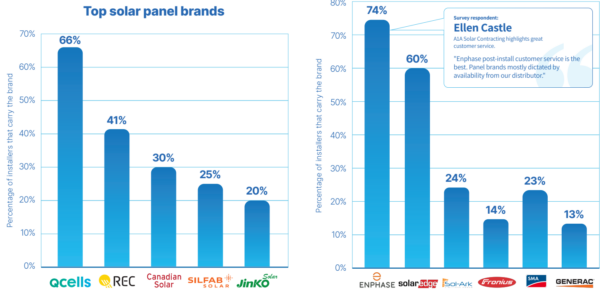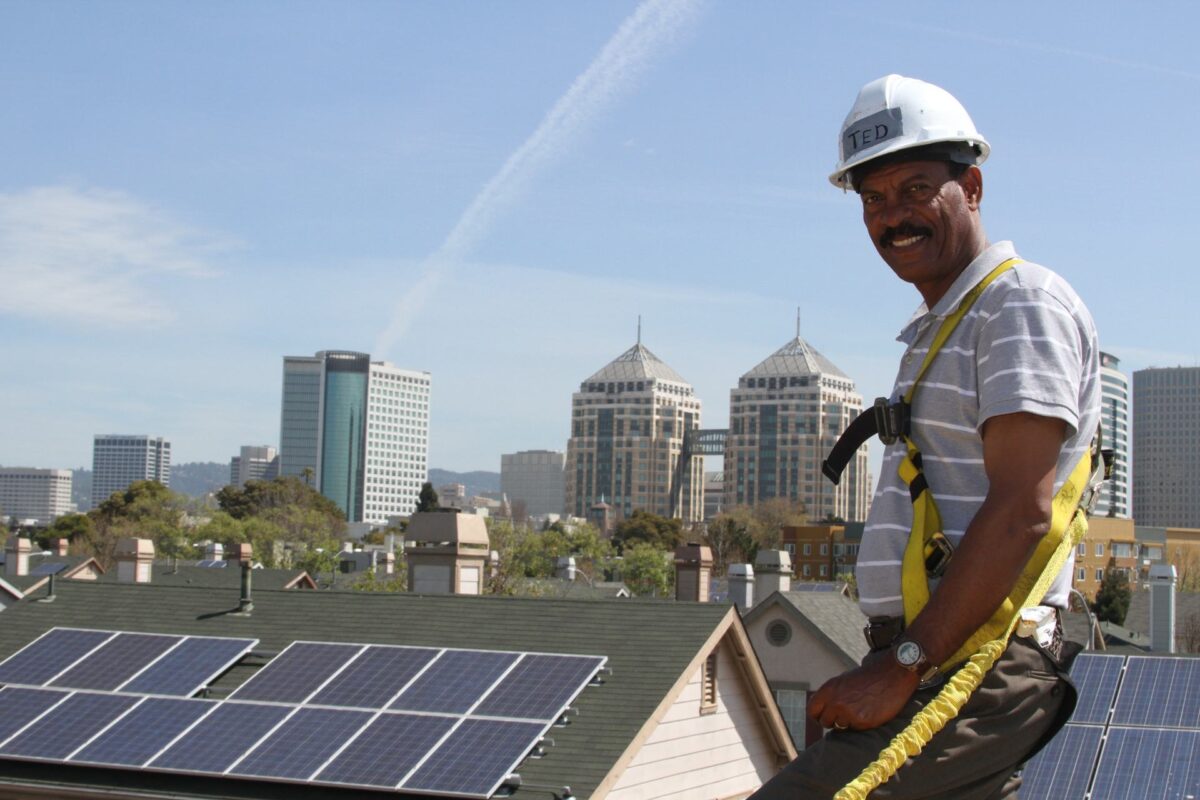From pv magazine USA
Informational site and solar calculator developer SolarReviews and the North American Board of Certified Energy Practitioners (NABCEP) partnered to release an inaugural report on solar installers’ experience in the market.
The nationwide solar industry survey was comprised of nearly 500 participants, of which 62% were from residential and small commercial installation businesses, 6% were commercial installers, 6% were operations and maintenance companies, 4.5% electricians, 4% utility-scale installers, and 17.4% listed as other participants.
Increased electricity prices were listed as the top reason customers are looking for solar, as 66% of respondents said prices are driving demand. Additionally, 62% of respondents said the Inflation Reduction Act is expected to improve their business.
Notably, 61% of respondents said pv magazine is their top solar industry news source. This makes pv magazine the number one trade publication, followed by Solar Power World (53%), state-level trade industry groups (40%) and Solar Builder (19%).
Additionally, 63% of respondents listed solar industry conferences as their most trusted source of news, many of which cited pv magazine as featured media partner. Meet this author at the upcoming RE+ Southeast event in Atlanta, and the CleanPower conference in New Orleans.

Respondents said top panel brands they procure include Qcells (66%), REC (41%), Canadian Solar (30%), Silfab Solar (25%) and JinkoSolar (20%).
The top inverter brands include Enphase Energy (74%) SolarEdge Technologies (60%), Sol-Ark (24%), SMA (23%), Fronius (14%) and Generac (13%).
Enphase was also the top pick for energy storage systems (58%), followed by Tesla, SolarEdge, Generac, and LG Chem, all hovering around 25% of respondents.
“Enphase post-install customer service is the best. Panel brands are mostly dictated by availability from our distributor,” said Ellen Castle, a survey respondent from A1A Solar Contracting.

Installers are split on how much growth they expect in 2023. About 37% said they expect to sell slightly more solar, while 36% expect much more. About 16% of installers said they expect to sell the same amount of solar in 2023 as 2022, while 11% expect a dip in sales.
Installers continue to alter their offerings as demand for new technologies emerges. About 15% of installed systems were oversized to meet the future demands of an electric vehicle charging at home. Over 80% of residential installers said they now offer battery energy storage, while 67% said they offer EV charging ports. About 40% of residential installers said they offer electrician services, and 28% of installers also perform roofing work.
Respondents said 21% of solar jobs included energy storage, while California, Florida, and Texas have battery attachment rates closer to 30%. Increased electricity prices, more frequent power outages, and shifting net metering policy are expected to drive up battery adoption further.
In the finance category, the largest group of customers are opting for solar-specific loans (44%), followed closely by cash purchases (42%), and power purchase agreements or leases (10%). Mosaic was listed as the top loan platform (20%), followed by Sunlight Financial (17%) and Goodleap (12%).
When asked about the biggest barriers to success, participants listed the high cost of financing as the greatest concern (42%), followed by customer acquisition (42%), difficulty hiring enough employees (38%), inflation (33%), and permitting and interconnection rules and cost (31%).
Respondents say the effects of inflation are leading to increased operational costs (70%), higher prices leading to solar demand (66%), and higher wages for workers (63%).
As solar businesses struggle to find employees, respondents listed finding trained installers as the greatest skill in need (71%). This was followed by trained electricians (67%) and construction workers (51%).
Respondents reported that 11% of their employees were NABCEP-certified. Interestingly, 42% of installers said they require installation workers to obtain Continuing Education Units (CEUs) each year, and 74% said they cover the costs of CEUs.
When asked about ongoing supply chain issues, respondents were split. About 34% of respondents said they experienced better supply chain conditions in 2022 than 2021, while 26% said it was about the same, and 41% said component supply issues are worse than the previous year. As international goods were in short supply, 42% of respondents said they turned to sourcing domestically produced solar components.
This content is protected by copyright and may not be reused. If you want to cooperate with us and would like to reuse some of our content, please contact: editors@pv-magazine.com.









1 comment
By submitting this form you agree to pv magazine using your data for the purposes of publishing your comment.
Your personal data will only be disclosed or otherwise transmitted to third parties for the purposes of spam filtering or if this is necessary for technical maintenance of the website. Any other transfer to third parties will not take place unless this is justified on the basis of applicable data protection regulations or if pv magazine is legally obliged to do so.
You may revoke this consent at any time with effect for the future, in which case your personal data will be deleted immediately. Otherwise, your data will be deleted if pv magazine has processed your request or the purpose of data storage is fulfilled.
Further information on data privacy can be found in our Data Protection Policy.